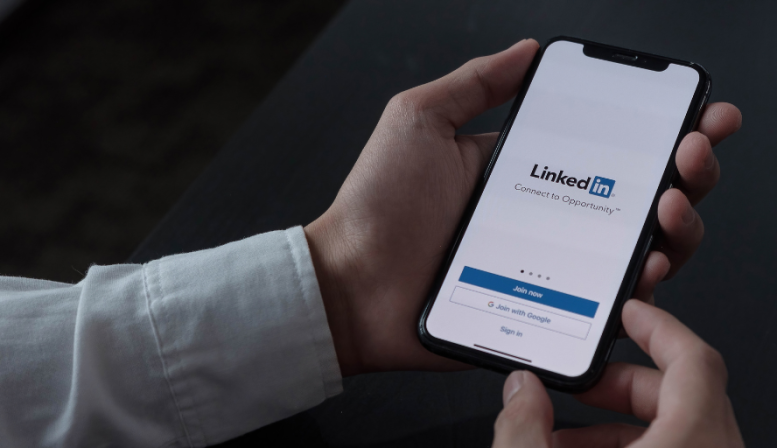How to Use LinkedIn to Get Speaking Engagements

Where social media is concerned, LinkedIn is a household name. Launched in 2003, LinkedIn has experienced a growing number of users ever since.
According to Statista, 779 million people used LinkedIn in 2021. Given that LinkedIn has had an average monthly growth rate of 3% since its launch, that figure would have grown by a few million users as of the time of writing, November 2022. This shows that LinkedIn is one of the most widely used social media platforms.
People use LinkedIn for various purposes, including sharing and accessing professional resources, finding business contacts, running ads, and advertising events. Also, being a platform for professionals, LinkedIn offers a great chance to exhibit thought leadership.
For speakers, LinkedIn offers the opportunity to reach out to event organizers for speaking engagements. These speaking gigs could be corporate, industry, in-person or virtual events. However, to take advantage of this, you must be intentional about getting speaking opportunities. Keep reading to learn how to find speaking opportunities on LinkedIn.
1. Create an Engaging Headline
The first step in finding speaking opportunities on LinkedIn is to create an engaging headline.
The world's most outstanding speakers have one thing in common: their ability to engage an audience. To show that you can do that, a good start is to create an engaging headline on LinkedIn.
So first, you should add the title Public Speaker, Motivational Speaker, or Event Speaker to your headline. The purpose of this is to ensure your name pops up among the suggestions anytime anyone searches for these speakers in your region on LinkedIn. Check out the image below:
Source
Next, you must ensure that your LinkedIn bio has the necessary information about your area of expertise. We’ll talk more about the words you should use to describe your expertise in the next section. For now, you should know this is important because rather than being a jack of all trades, you should choose a niche and focus on those topics you are most interested in and on which you are most knowledgeable.
Your profile should include topics you have delivered speeches on in the past, your level of experience, contact information, accomplishments, relevant certifications and even a testimonial. But be sure to keep it short and straight to the point, as you do not want to bore your reader or put them off reading when faced with a wall of text.
2. Include Keywords Based Around Your Expertise
Don’t forget to utilize keywords based around your expertise. Keywords are words or phrases people are likely to search for when trying to get information on a subject area.
The keywords you use must be relevant to what you do. For instance, if you offer business proposal writing services, you should use keywords like proposal writing and business proposal writer. However, do not make the mistake of stuffing words into your LinkedIn profile just because you want to stand out.
To illustrate, look at the LinkedIn profile of Mark Snead below. His title not only includes “experienced speaker” but also related tags like “Coach” and “Best-selling author”. It continues in the “About” section of the page. In addition, keywords like “facilitating”, “speaking”, “mentor”, “motivate”, “career”, “group”, and “people” can be found in the short but straightforward bio.
Source
Since these are keywords that people will likely look for when searching for professional speakers, it will rank higher in search results than the profile of someone who only has their profession on the title page.
3. Keep Your Recommendations Up to Date
Another thing you should do when learning how to find speaking opportunities on LinkedIn is to keep your recommendations up to date.
A recommendation is a powerful tool for selling your expertise. This is mainly because it shows that good things are being said about you by a third party. In other words, it is not you tooting your own horn but people who can vouch for you because they have experienced your expertise.
To ensure that your recommendations are up to date on your profile, you should reach out to the organizer and your audience after each speaking session you deliver.
LinkedIn recommendations enhance your reputation and make you more credible in the eyes of event organizers who may be considering inviting you to their next session. Quality recommendations also help you rank higher on LinkedIn when anyone is searching for public speakers.
However, just because you are advised to get recommendations does not mean you should oversaturate your LinkedIn profile with just any recommendations. Quality is more important than quantity. Ensure your recommendations are from credible sources like event managers and high-profile attendees of your events.
Such recommendations will move you one step closer to getting new speaking engagements. They will also help you retain your customers.
4. Include Audio and Video
Many public speakers mostly feature the details of the events they have spoken about on their LinkedIn profiles. It helps to go one step further by featuring audio and video recordings on your LinkedIn profile. This enables you to stand out and, eventually, boost your brand.
Audio and video are the best ways to prove that you are who you say you are. They also allow people to see you in action and study the things you say and how you say them, i.e., your style of speech.
You should not stop at featuring these on your profile. You can also post them on your feed so your connections can see them. If it’s a long video, break it into standalone snippets, then over time share them in order on LinkedIn. You could make it into a series, with each extracted video snippet being referred to as an episode.
People generally have a short attention span and are more likely to watch short videos than one long video to the end. If you cannot do this, at least include links to the video where people can go and watch the full version of the talk.
This is what renowned speaker and best-selling author, Gary Vaynerchuk, does. In the image below, he shared an excerpt of his keynote speech at the industry event, DattoCon 2022.
Source
He also included a link where people can go and watch the rest of the video. Doing something like this will increase the level of engagement you are getting on your LinkedIn, and ultimately get you more speaking engagements.
5. Blog about Your Speaking Experience
Another way to use LinkedIn to get speaking engagements is by blogging about your speaking experience. You can share your experience about every noteworthy event that you speak at in your blog post.
You can create a blog page on WordPress. Another option is to publish your written content directly on your LinkedIn account.
Include details such as the event's theme, the date, the type of audience in attendance and the occasion's significance. It would be best if you also narrated how the event went and the positive feedback you got from the organizers and audience alike.
Liene Karaca blogging about her first international speaking gig on her LinkedIn page is a great example. She highlighted the lessons she learned and even included the feedback she got from the attendees about her performance.
Source
After publishing your blog posts detailing your speaking experiences, you can also share the excerpts on your LinkedIn page. These excerpts should have short, but exciting details about your speaking engagement. You can then include a link to the blog post, where LinkedIn users can go and read the rest of the blog article.
In Closing
LinkedIn has proven to be a great avenue for displaying thought leadership. It is filled with professionals whom you can easily connect.
To get speaking engagements on LinkedIn, start by creating an engaging headline that makes it easier for your target audience to find you. Then, use relevant keywords in your profile that reflect your expertise. Relevant keywords make your profile better structured and your expertise more believable.
You should also ensure that you update your recommendations. Send recommendation requests to event organizers asking for their feedback after each of your events. Seeing is believing, so ensure you include videos of your speaking engagements. If it is audio format, feel free to share it on your profile. Lastly, blog about your speaking engagements. Share your experiences and the impressions you made at the events.
Learning how to find speaking opportunities on LinkedIn isn’t that hard. Follow these tips and you’ll reap the best results.
About the author:
Martin Gessner is the Founder of Focus on Force. He has spent over 10 years working in various Salesforce roles including business analyst, project manager, consultant, and solutions architect. Along the way, he has earned twelve certifications, published "The Salesforce Career Playbook", and helped Salesforce professionals learn more about Salesforce, develop their careers and prepare for certifications.






